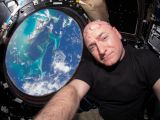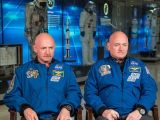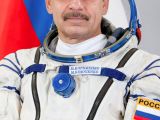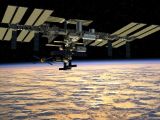Astronauts Scott Kelly of NASA and Mikhail Kornienko of Roscosmos arrived at the International Space Station many months ago, on March 27.
This September 15 marks their 171st day aboard the orbital complex. It might sound like like a whole lot of time to spend in space, but the fact of the matter is Scott Kelly and Mikhail Kornienko's mission is far from over.
On the contrary, the astronauts have another 171 days to spend aboard the International Space Station, looking down on us from our planet's orbit.
They are scheduled to return to Earth next year, on March 3, after having spent a total of 342 days in orbit. That's longer than any other astronaut so far.
Why make astronauts spend this much time in space?
NASA is intent on sending astronauts to Mars in the not-too-distant future, as are other space agencies. Before such a mission gets the go-ahead, however, the effects of spaceflight on the human body need be thoroughly researched.
Scott Kelly's and Mikhail Kornienko's one year aboard the International Space Station should help scientists understand what problems might arise during prolonged spaceflight.
“The pair are spending 342 days in space to help researchers better understand how the human body reacts and adapts to long duration spaceflight,” explains US space agency NASA.
Several experiments have already been carried out
Since boarding the International Space Station in late March, Scott Kelly and Mikhail Kornienko have already been involved in a series of experiments documenting how the human body responds to space conditions.
For instance, they've had their eyes and their vision closely monitored to pin down any potential changes due to increased intracranial pressure, in turn the result of fluid shifts in the upper body because of weightlessness.
Hoping to get a better idea of how the human body transforms in space, researchers are also comparing Scott Kelly to his twin brother, retired astronaut Mark Kelly.
“Samples for the comparative genetics studies involving Kelly and his identical twin brother, retired NASA astronaut Mark Kelly, continue to be collected, with some already returned to Earth,” NASA details.
During their stay aboard the orbital complex, the astronauts have seen many other space explorers come and go.
Earlier this month, on September 4, Sergey Volkov of Roscosmos, Andreas Mogensen of ESA and Aidyn Aimbetov of the Kazakh Space Agency arrived aboard a Soyuz spacecraft.
Then, Gennady Padalka, together with Andreas Mogensen and Aidyn Aimbetov, left and returned to Earth on September 11.
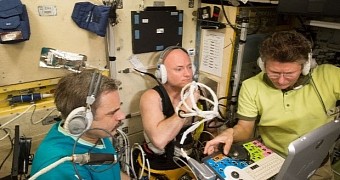
 14 DAY TRIAL //
14 DAY TRIAL // 

